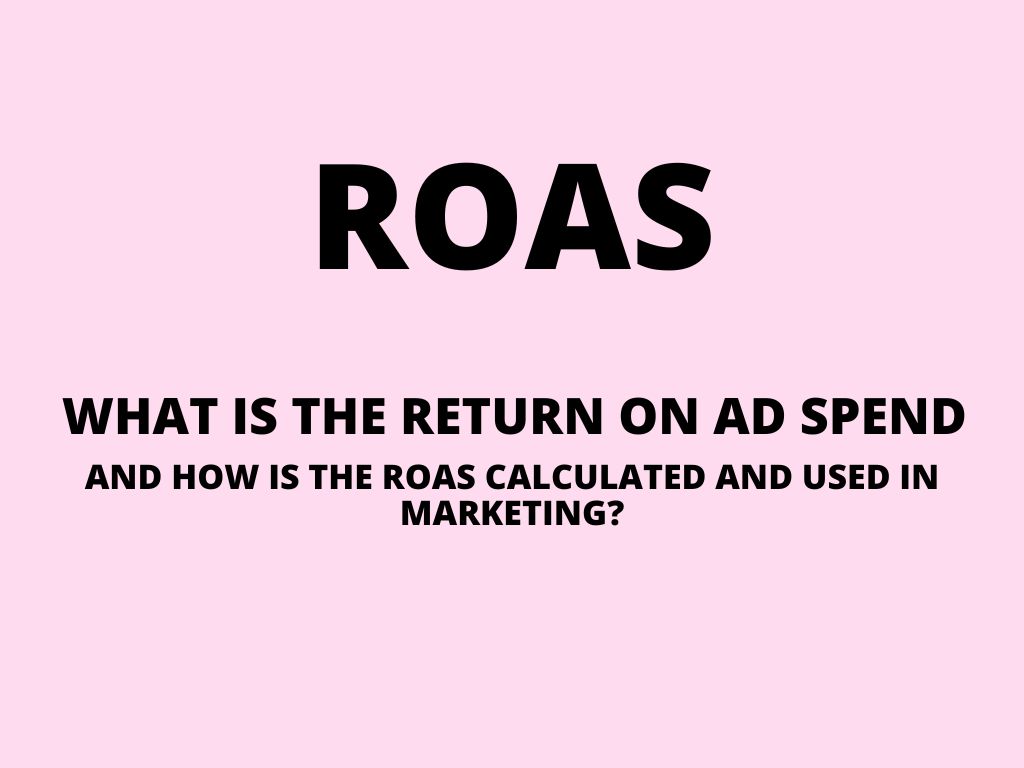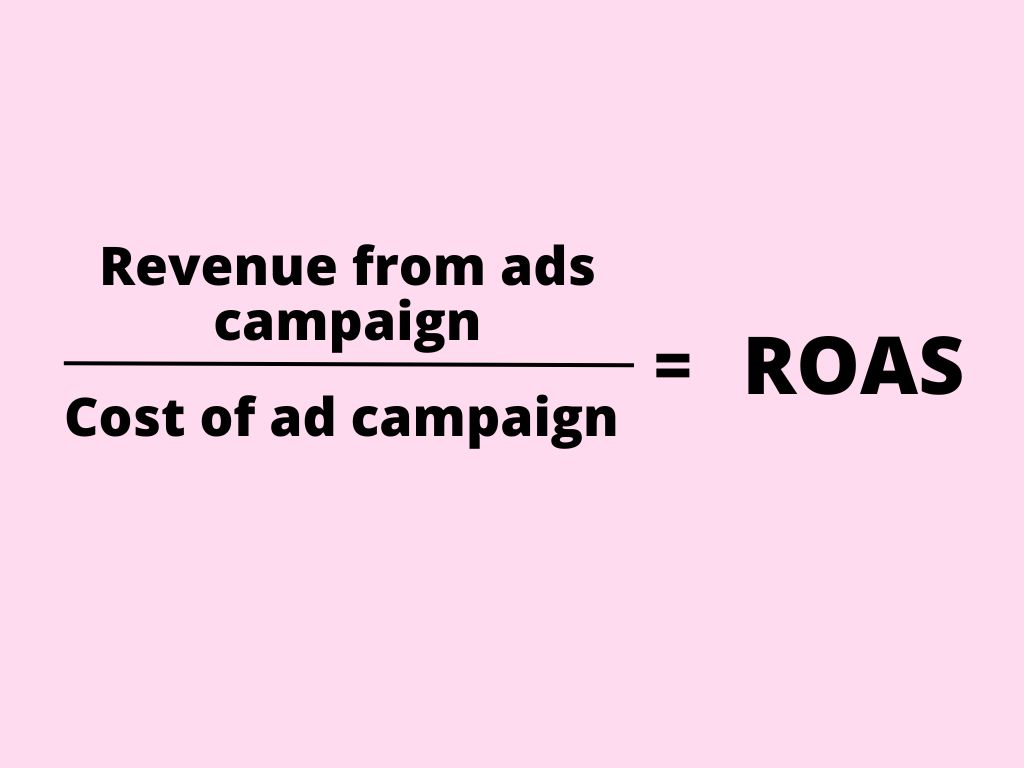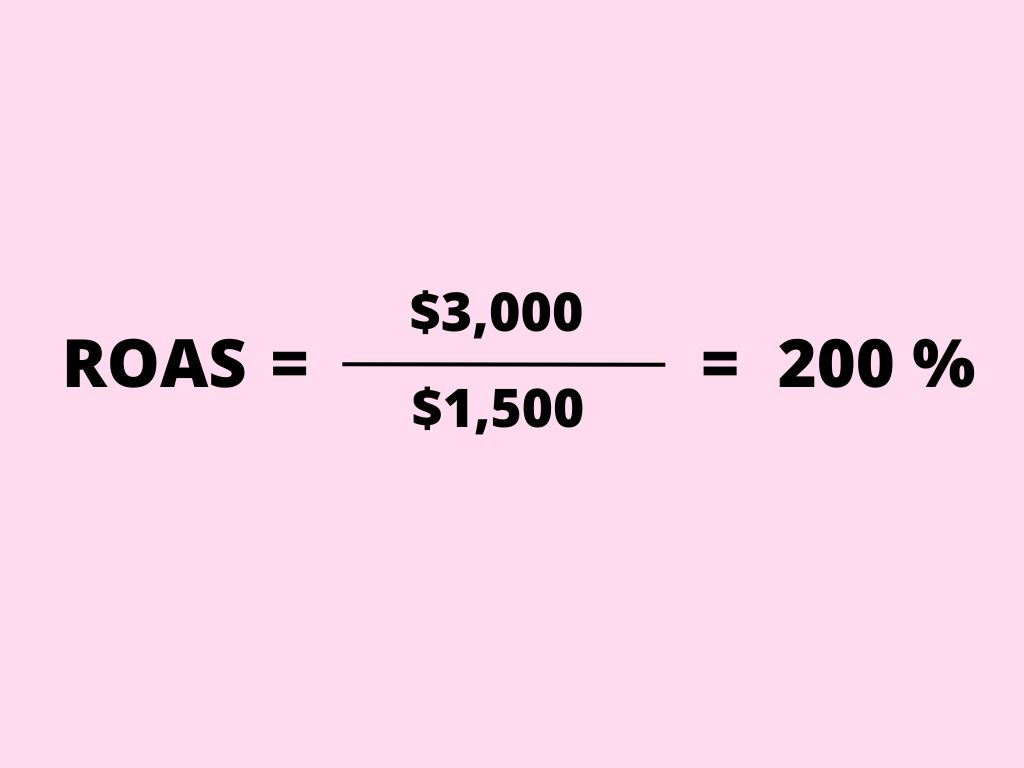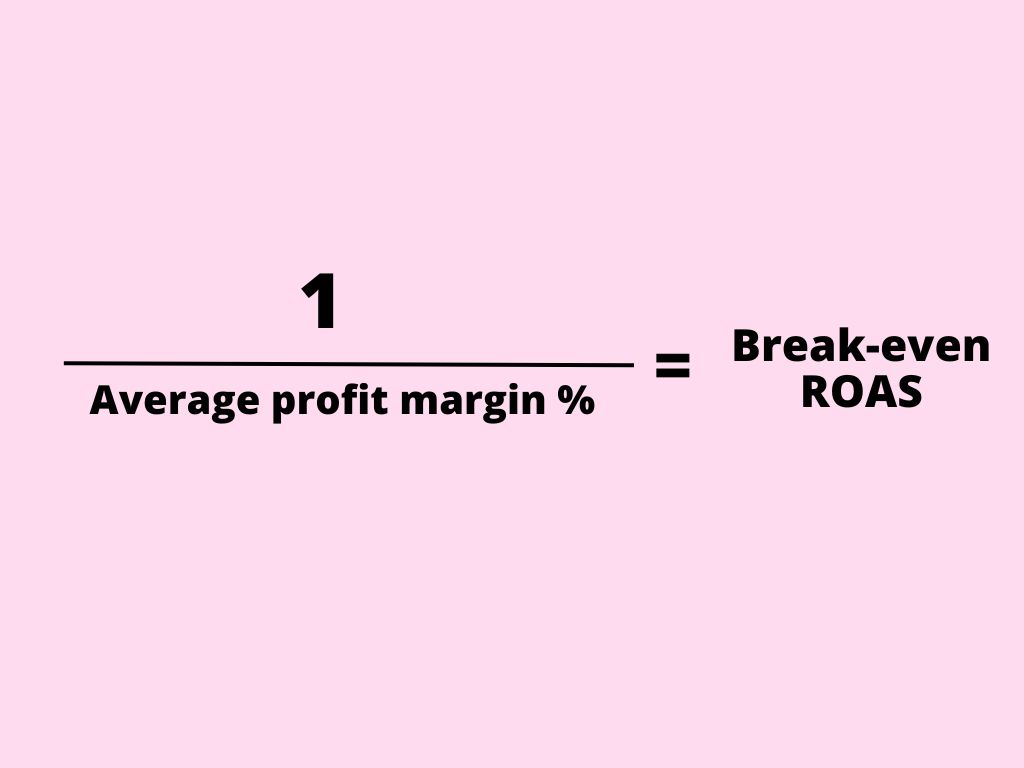
ROAS – what is the return on ad spend and how is it calculated and used in marketing?
ROAS, short for Return on Ad Spend, is a crucial marketing metric that quantifies the revenue generated for each dollar spent on advertising. By calculating and monitoring ROAS, businesses can assess the effectiveness of their advertising efforts. This metric can be applied to various advertising initiatives, ranging from individual ads or projects to monthly campaigns or even annual advertising expenditures.
What is ROAS?
ROAS, or return on ad spend, is a crucial metric for app marketers to assess the effectiveness of their campaigns and advertisements. It measures the revenue generated in relation to the budget spent on advertising.
ROAS is typically presented as a ratio, where a higher ratio indicates better campaign performance. For example, if you invested $1,500 in ad spend for a campaign and generated $6,000 in-app revenue, your ROAS would be 4:1. This means that for every dollar spent on advertising, you earned $4 in revenue.
How to calculate return on ad spend (ROAS)
Calculating Return on Ad Spend (ROAS) is a straightforward process. You divide the revenue generated from your ad campaigns by the cost of those campaigns (in case you want to get overall ROAS, but the same logic is applied on just one or several campaigns).

Here’s an example: if your ad campaign costs $1,000 and it generates $2,000 in revenue, you calculate ROAS by dividing $2,000 by $1,000. This results in a ratio of 2:1 or 200%. A higher ROAS indicates a more effective campaign, as it signifies that you have earned a greater amount of revenue for each dollar spent on advertising.
Another calculation example would be as follows:
$6,000 (revenue) / $1,500 (ad spend) = $4 or 4:1 (ROAS)
A low or high return on ad spend serves as a valuable indicator of campaign performance and profitability. It helps inform decisions regarding campaign budgets and the diversification of media sources.
While ROAS provides insights into campaign performance, it is essential to consider other metrics such as CPA (cost per acquisition), LTV (lifetime value), and ARPU (average revenue per user) to gain a comprehensive understanding of overall performance.
In summary, ROAS is similar to ROI (return on investment), but specifically focuses on campaigns that drive traffic to mobile apps.
Why is ROAS so important?
ROAS, or Return on Ad Spend, holds significant importance because it helps evaluate the effectiveness of your app marketing efforts and guides decision-making regarding the budget allocation and scaling strategies. It answers the fundamental question: “Are my app marketing efforts actually working?”
By calculating ROAS, you can determine whether your campaigns are generating more revenue than the cost incurred. For instance, if a campaign brings in high-quality users who generate substantial revenue in your app but ends up costing more than the revenue generated, it cannot be considered a successful campaign. ROAS helps you assess the profitability and success of your marketing initiatives.
It’s beneficial to analyze ROAS at different levels, ranging from an overview of your advertising budget and platform-specific campaigns to individual campaigns, ad sets, ads, and even creative elements. This allows you to extract insights tailored to your specific objectives.
It’s worth noting that even partial ROAS data can be valuable, especially when combined with predictive analytics. For example, if you discover that users who generate at least 50% of their acquisition cost by Day 3 tend to become profitable users by Day 30, you can leverage this insight to optimize your campaigns. By cutting off underperforming ad sets early on, you can ensure that your ROAS remains positive.
However, while ROAS is a powerful metric on its own, it provides an incomplete picture. To fully understand performance and make informed decisions, it’s essential to consider other metrics such as CPA (Cost Per Acquisition), ARPU (Average Revenue Per User), and LTV (Lifetime Value). These metrics, when analyzed together, provide comprehensive insights that enable better decision-making regarding future budget allocation, marketing strategies, and product roadmap planning.
Luckily, ROAS is easy to calculate — just use this formula:
The return on ad spend (ROAS) is typically expressed as a percentage. To calculate ROAS, you divide the profit generated from an ad campaign by the cost of that campaign and multiply it by 100. For example, if you spend $1,500 on an ad campaign and the resulting profit is $3,000, the calculation would be:
($3,000 profit / $1,500 cost) * 100 = 200% ROAS

In this scenario, the ROAS would be 200%, indicating that for every dollar spent on the campaign, there was a $2 return in profit. It’s important to note that 100% represents the break-even point, meaning that any ROAS above 100% indicates a profitable campaign.
Break-even ROAS calculations/formula
You can use the following formula to calculate your break-even ROAS, expressed as a percentage:
In addition to positive and negative ROAS, it’s important to understand break-even ROAS, which represents the point at which your advertising costs are covered without generating a profit or loss. Break-even ROAS serves as a valuable benchmark to guide your ad spending decisions.
Break-even ROAS = 1 / Average Profit Margin %

To determine your average profit margin, subtract your average order costs from your average order value and convert it into a percentage:
Average Profit Margin % = (Average Profit Margin / Average Order Value) * 100
For example, let’s say your app costs $3 per customer to produce, and you sell it for $5, resulting in an average profit of $2 per sale. The average profit margin would be calculated as:
Average Profit Margin % = (2 / 5) * 100 = 40%
Based on this, your break-even ROAS would be:
Break-even ROAS = 1 / 40% = 250%
In this scenario, a 250% ROAS would ensure that your ad campaign covers its costs, indicating the point at which it becomes self-sustaining.
Break-even ROAS is particularly relevant when running awareness campaigns where generating immediate substantial sales may not be the primary goal. However, if your objective is to boost revenue, you may set a higher target ROAS to achieve profitability.
By understanding and calculating break-even ROAS, you can effectively manage your ad spending and evaluate the success of your campaigns in relation to covering costs.
ROAS vs other metrics
ROAS and ROI are two important metrics in marketing that assess the success of a campaign, but they have distinct differences in their calculation and focus.
ROI, or return on investment, considers the total cost of an advertising campaign, including the cost of the ad itself as well as other resources such as IT, software costs, design, and distribution. It evaluates the overall return on investment by comparing the campaign’s total profit to its total cost.
On the other hand, ROAS, or return on ad spend, solely focuses on the profit generated directly from the expenditure on an ad campaign. It does not take into account the additional costs beyond the placement of the ad. ROAS measures the effectiveness and profitability of an ad campaign by analyzing the revenue generated from direct ad spend.
While ROI is a broad metric used across various business functions, ROAS is specifically a marketing term and serves as the foundation for understanding the success of a campaign from a marketing perspective.
Understanding the difference between ROI and ROAS is crucial for effectively evaluating campaign performance and making informed decisions about resource allocation and marketing strategies.
ROAS vs CAC
Your customer acquisition cost (CAC) represents the cost of acquiring a new paying customer. It is calculated by dividing your total campaign spend by the number of paying customers obtained.
For example, if you spent $2,000 on a campaign and acquired 200 customers, your CAC would be $10 per customer.
While CAC focuses on the cost per customer acquired, ROAS allows you to assess the revenue generated by those customers. ROAS helps you understand the value of the customers acquired through your campaign and enables you to prioritize your efforts effectively.
ROAS vs eCPA
Metric eCPA, or effective cost per action, measures the actual campaign results from a cost perspective. It calculates the cost per action, such as clicks, by dividing the total campaign spend by the number of actions.
Although ROAS and eCPA both evaluate campaign success from a monetary standpoint, eCPA does not factor in the total revenue generated. By considering ROAS alongside eCPA, you can analyze the revenue generated by the actions and determine the overall profitability of the campaign.
ROAS vs CTR
CTR, or click-through rate, is determined by dividing the number of clicks by the number of impressions served. It indicates the percentage of users who clicked on your ad after viewing it.
While CTR provides insights into the effectiveness of a campaign’s creative elements in driving user engagement, it differs from ROAS as it focuses solely on the performance of the ad itself and does not consider overall revenue generation.
Pros and Cons of ROAS
ROAS offers several advantages in assessing campaign performance, but it is not without limitations. Let’s explore some of the pros and cons:
Advantages of using ROAS
- Channel optimization: By measuring ROAS across various channels, you can identify the most effective ones and allocate resources accordingly, maximizing your return on investment.
- Ad optimization: Comparing ROAS across different ad creatives allows you to identify the most resonant elements and refine your ads to better engage your target audience.
- Simplicity: ROAS provides a straightforward and easily understandable snapshot of campaign performance, making it accessible to non-marketers and facilitating reporting.
- Data-driven decision-making: ROAS insights help shape future marketing strategies and campaigns, enabling smarter planning, cost savings, and faster results. It provides valuable data to support ideas and justify decisions to management.
Limitations of using ROAS
While ROAS is a valuable metric, it is important to be aware of its limitations. Here are some considerations to keep in mind:
- Focus on the short term: ROAS typically measures short-term behavior directly linked to specific ads. To understand long-term revenue trends, it is important to consider metrics like customer lifetime value (LTV) that provide insights into the overall revenue generated over a customer’s lifetime.
- Incomplete view of the bigger picture: Advertising is just one aspect of the marketing mix, and returns on investment may be influenced by various factors beyond the specific ad campaign. Other touchpoints, such as offline advertising, reviews, word-of-mouth, or brand recognition, can impact customer behavior. Therefore, attributing all returns solely to one ad campaign can be challenging.
- Lack of volume perspective: ROAS can show positive results even with a small number of customers or a low volume of ad spend. It is essential to consider the potential impact of attracting a larger customer base and scaling efforts to maximize revenue.
- Privacy considerations: With increased privacy regulations and changes in data collection practices, accurately measuring ROAS can become more challenging. Fragmented data across networks and limited access to user data can impact attribution accuracy and hinder ROAS calculations.
- Historical performance: Past success does not guarantee future results. While ROAS is a helpful performance indicator, continuous testing and measuring are necessary to adapt to changing market dynamics.
- Revenue attribution: ROAS focuses on direct revenue generated from ad spend but may not capture the complete revenue impact of other marketing efforts or customer interactions beyond the initial click or conversion.
- Limited perspective: ROAS provides insights into revenue generated but does not encompass other essential metrics such as customer lifetime value (LTV) or return on investment (ROI), which provide a more comprehensive understanding of campaign performance.
Determining a Good ROAS
The concept of a “good” ROAS varies depending on the organization, industry, and specific goals. Positive ROAS indicates profitability, but the desired level of return depends on factors such as profit margins, business models, and advertising platforms.
For example, hyper-casual gaming apps often have low-profit margins, requiring high volume and scale to drive profitability. On the other hand, subscription-based apps like Netflix or Spotify can tolerate higher acquisition costs due to recurring subscription revenue and higher profit margins.
Additionally, different advertising platforms may have varying average ROAS values. For example, research suggests that companies achieve a return of 6x to 10x (600% to 1000%) on average for Facebook ads, while Google Ads typically have an average ROAS of around 200%.
It is important to benchmark your ROAS against your own industry, company size, and target audience rather than solely relying on general averages. Each organization’s unique circumstances and goals should guide the evaluation of a “good” ROAS for its specific context.
Understanding target ROAS
Target ROAS is a specific bidding strategy designed to achieve a predetermined value for each dollar spent on your campaign. Unlike other bidding campaigns in platforms like AdWords, where bid control is handled by algorithms and automation, target ROAS requires its own bid strategy customized to your goals.
Target ROAS can be particularly beneficial in certain verticals, such as eCommerce, where the objective is to drive in-app purchases. However, it’s important to note that achieving the desired target with target ROAS relies on having a minimum number of conversions. Google recommends at least 15 conversions within the last 30 days in the same campaign to maximize the effectiveness of target ROAS. Without sufficient conversions, it can be challenging for Google to hit the desired target value.
Improving ROAS: Best strategies for better ROAS
As a marketer, your goal is to increase revenue and conversions, and improving your Return on Ad Spend (ROAS) is crucial in achieving that. Here are nine strategies to help you improve your ROAS:
- Set benchmarks: Understand what qualifies as good ROAS by establishing benchmarks for each campaign and channel. These benchmarks will serve as a reference point for assessing your success and guiding future campaigns.
- Test and learn: Experiment with different campaigns, creatives, and channels to determine what delivers the best results and attracts valuable users. Utilize A/B testing to compare various elements, such as creatives, placements, and targeting strategies.
- Optimize your landing pages: Evaluate the effectiveness of your landing pages, ensuring they are clear, engaging, and aligned with your ads. Consider page load speed, visual appeal, and the clarity of calls to action. Make necessary tweaks to enhance the user journey and increase conversions.
- Lower the cost of your ads: Reduce your ad spend by improving your quality score, which leads to higher-ranking ads and lower cost per click (CPC). Utilize long-tail keywords or more niche-specific keywords instead of popular terms. Implement negative keywords to exclude irrelevant searches and avoid wasted clicks.
- Know your audience: Conduct thorough customer research to understand your target audience’s online behavior, interests, and preferences. By aligning your messaging with your audience’s characteristics, you can drive higher conversions and optimize your ad spend by focusing on the right channels.
- Re-engage high-value users: Re-engage users who have delivered a high ROAS, utilizing owned channels and offering limited-time deals or personalized incentives. Reconnecting with these valuable users can lead to repeat purchases and increased revenue.
- Bid smarter: Experiment with different bidding strategies to find the most cost-effective approach for your campaigns. Adjust your maximum bid, leverage automated bidding, and set different bids for desktop and mobile platforms based on performance and cost efficiency.
- Utilize predictive analytics: Leverage predictive analytics to understand how your most valuable users monetize throughout their app usage. By identifying early actions that correlate with future monetization, you can optimize your campaigns earlier in the user journey, reducing waste and achieving your revenue targets more efficiently.
- Consider the entire customer journey: Look beyond advertising and evaluate the entire customer journey to identify any bottlenecks or points of friction that may impact conversions. Assess factors such as pricing, checkout process, and information requirements to optimize the overall user experience.
By implementing these strategies, you can make informed decisions, optimize your ad campaigns, and continuously improve your ROAS to drive better results and revenue growth.
Key information about the return of ad spend (ROAS) to remember
- ROAS is a crucial metric for marketers as it determines the effectiveness of their campaigns. It’s important to ensure that the revenue generated by high-value users surpasses the cost of acquiring them. However, ROAS alone cannot provide a complete picture of your marketing performance. It should be complemented with other metrics like ROI, CAC, CTR, and eCPA.
- The definition of a good ROAS varies depending on your company and the advertising platform you’re using, but it should always be positive. It’s essential to understand that achieving a positive ROAS may require a considerable amount of time, sometimes spanning months.
- Break-even ROAS serves as a valuable benchmark to ensure that your advertising expenses are covered by the revenue generated. Additionally, tracking early indicators of revenue can help you gauge your partial ROAS and determine if you’re on the right track, allowing you to optimize your campaign accordingly.
- To improve your ROAS, focus on creating engaging content and providing a seamless customer journey. It’s also worth exploring strategies to reduce advertising costs, such as refining your bidding and keyword approaches.
Was this article helpful?
Support us to keep up the good work and to provide you even better content. Your donations will be used to help students get access to quality content for free and pay our contributors’ salaries, who work hard to create this website content! Thank you for all your support!
Reaction to comment: Cancel reply